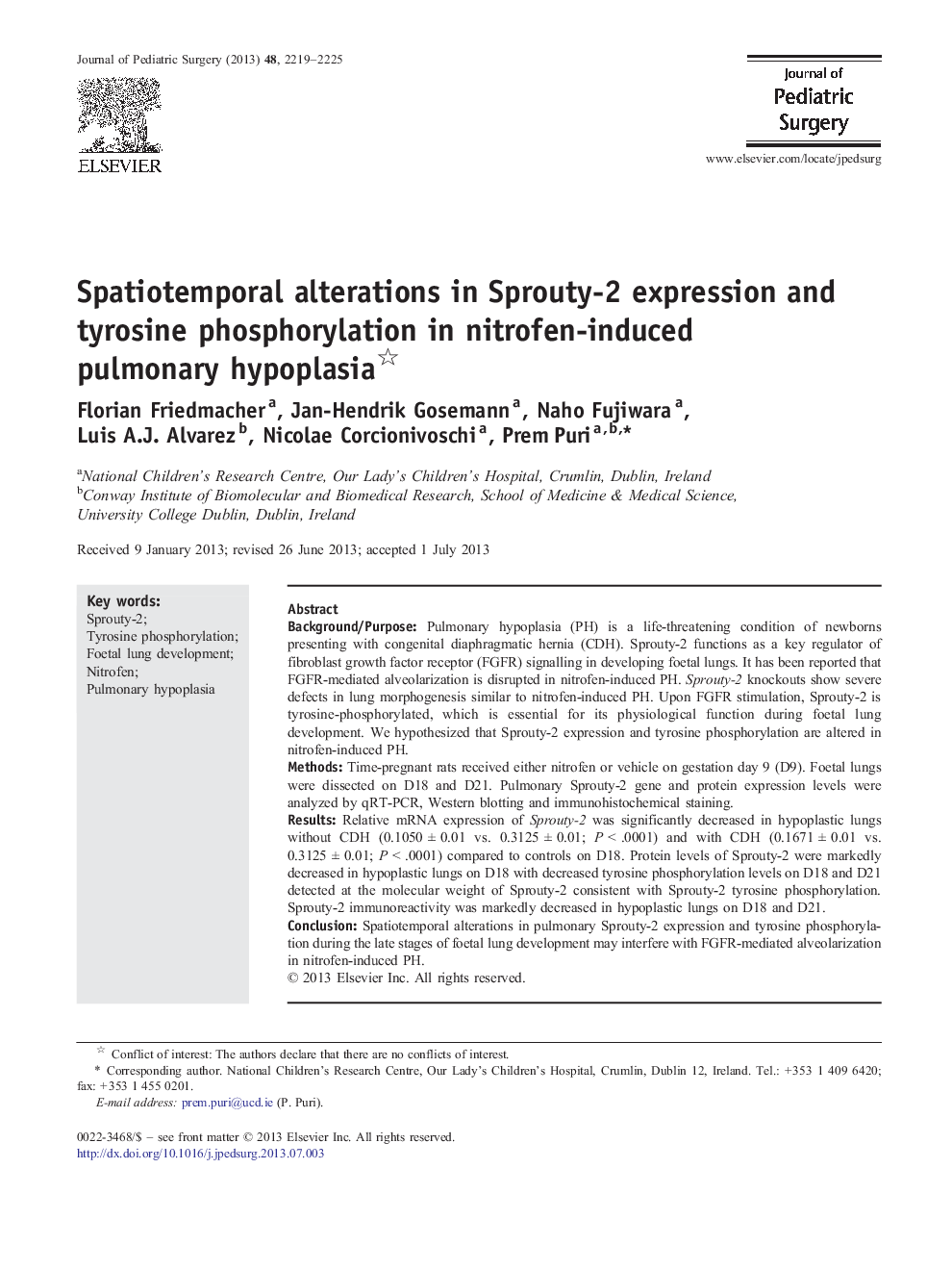| Article ID | Journal | Published Year | Pages | File Type |
|---|---|---|---|---|
| 6217426 | Journal of Pediatric Surgery | 2013 | 7 Pages |
Background/PurposePulmonary hypoplasia (PH) is a life-threatening condition of newborns presenting with congenital diaphragmatic hernia (CDH). Sprouty-2 functions as a key regulator of fibroblast growth factor receptor (FGFR) signalling in developing foetal lungs. It has been reported that FGFR-mediated alveolarization is disrupted in nitrofen-induced PH. Sprouty-2 knockouts show severe defects in lung morphogenesis similar to nitrofen-induced PH. Upon FGFR stimulation, Sprouty-2 is tyrosine-phosphorylated, which is essential for its physiological function during foetal lung development. We hypothesized that Sprouty-2 expression and tyrosine phosphorylation are altered in nitrofen-induced PH.MethodsTime-pregnant rats received either nitrofen or vehicle on gestation day 9 (D9). Foetal lungs were dissected on D18 and D21. Pulmonary Sprouty-2 gene and protein expression levels were analyzed by qRT-PCR, Western blotting and immunohistochemical staining.ResultsRelative mRNA expression of Sprouty-2 was significantly decreased in hypoplastic lungs without CDH (0.1050 ± 0.01 vs. 0.3125 ± 0.01; P < .0001) and with CDH (0.1671 ± 0.01 vs. 0.3125 ± 0.01; P < .0001) compared to controls on D18. Protein levels of Sprouty-2 were markedly decreased in hypoplastic lungs on D18 with decreased tyrosine phosphorylation levels on D18 and D21 detected at the molecular weight of Sprouty-2 consistent with Sprouty-2 tyrosine phosphorylation. Sprouty-2 immunoreactivity was markedly decreased in hypoplastic lungs on D18 and D21.ConclusionSpatiotemporal alterations in pulmonary Sprouty-2 expression and tyrosine phosphorylation during the late stages of foetal lung development may interfere with FGFR-mediated alveolarization in nitrofen-induced PH.
